China
2 Chapter Basic knowledge
-
-
1 Chapter Introduction
1.1 The history of Japanese companies entering the world
1.2 New business model in China
1.3 Advance scheme through Hong Kong
2 Chapter Basic knowledge
3 Chapter Investment Environment
3.2 Province and region of China
3.5 Investment incentives and regulations
4 Chapter Economic Environment
5 Chapter Establishment
5.3 Establishment of business base
5.4 Procedure after incorporation
6 Chapter Withdraw
7 Chapter Foreign exchange
7.1 Foreign exchange management system in China
7.2 Foreign currency management system of ordinary items
7.3 Foreign exchange control system of capital items
7.4 Foreign exchange control system in bonded area · Hong Kong
7.5 Individual foreign currency control system
8 Chapter M&A
8.2 Laws and regulations concerning M & A
8.5 Challenges after corporate acquisition
9 Chapter Corporate Laws
10 Chapter Accounting
11 Chapter Tax law
11.2 Representative Office Taxation
11.4 Individual Issues in China Domestic Tax Law
12 Chapter International taxation strategy
12.1 International tax relating to entering China
12.2 International taxation strategy
12.3 Individual Issues in International Taxation
12.4 Tax issues related to withdrawal
13 Chapter Transfer Price Taxation
13.2 Individual provision pertaining to transfer pricing taxation
13.3 Transfer price taxation and documentation
13.4 Transfer price survey in China
14 Chapter Labor
14.4 Points to remember when bringing Japanese
15 Chapter International Human Resources Management
15.1 Human Resources Labor Management
15.3 Personnel evaluation system
-
-
-
Basic knowledge
■ Formal Country ⇔ People's Republic of ChinaEnglish name: People's Republic of ChinaChinese name: Chinese People's Republic (简体), People's Republic of China (Traditional)
■National flag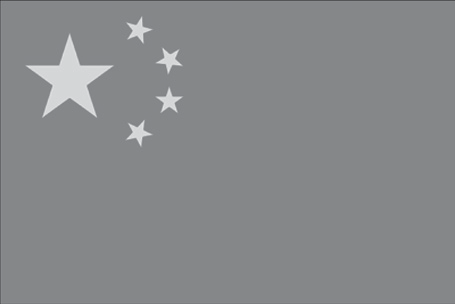
The flag of China is called the Five-star flag, and there are one big star in the red land and four small stars to surround it. Red represents revolution, yellow represents light. The four small stars show the class, meaning workers, farmers, petit bourgeois classes, patriotic strong capitalists, respectively. In addition, the big stars symbolize the leadership of the Chinese Communist Party and that the people in each class gather and unite under the Chinese Communist Party.
■ Area · Country land ⇔ 9,596,960 km 2 (about 26 times of Japan)The country's land area is 9.6 million cubic, boasting the third largest in the world. This is about 26 times that of Japan. Located in the eastern part of the Eurasian Continent, facing Japan, South Korea, the Philippines and others, we have a coastline of 18,000 km facing Balhae, Yellow Sea, East China Sea, South China Sea and others.The inland is bordering Russia, Mongolia in the north, Kazakhstan in the west, Afghanistan, Pakistan etc. in the south, India, Nepal, Myanmar, Vietnam etc. in the south and the DPR Korea in the east, and its border line distance is It will be 22,800 km.
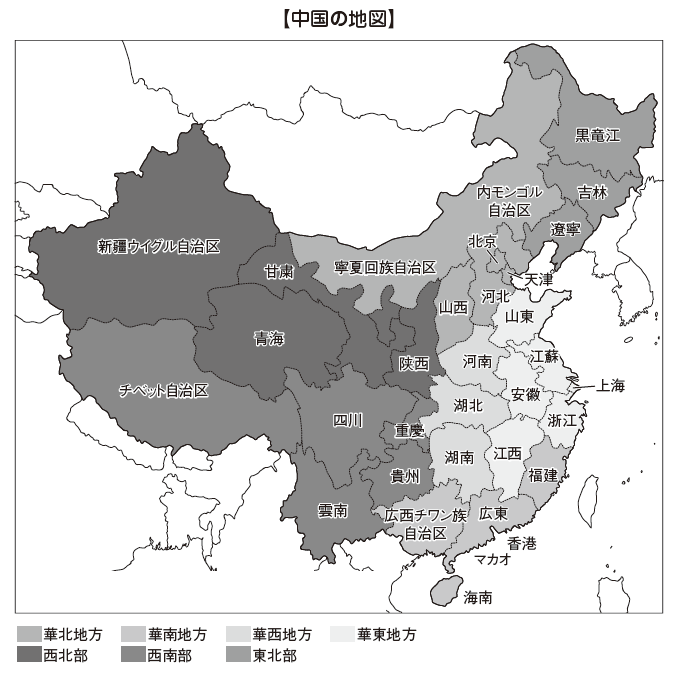
■ Capital ⇔ BeijingLocated in the center of the North China region, the capital was established in 800 years, including former, Ming and Qing. In 1949 New China was established and became the capital again. The population is 21. 114 million (as of the end of 2013), the second largest city in China after Shanghai. All major state organizations such as Central People's Government are located in Beijing, the center of politics.
■ClimateChina's land is vast and rich in tropical regions close to Southeast Asia, cold regions close to Siberia, dry deserts, wet rice crops and variety. As a whole, the area near the sea in the southeast tends to have more rainfall, and it decreases towards the inland in the northwest. Also, due to the influence of monsoon (seasonal wind), there are many areas where rainfall varies depending on the season.Shanghai and Hangzhou are in the coastal area, such as Chongqing and Chengdu are in the inland basin. Beijing is located in the warm temperate zone at 40 degrees north, but Guangzhou, Nanning, Hainan belongs to the tropical zone from subtropical. Climate conditions are different depending on each city, which is also a big feature.
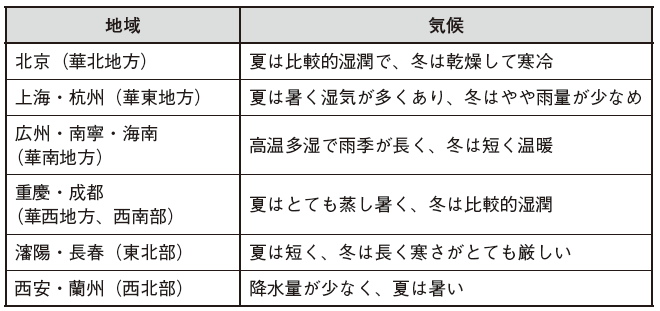
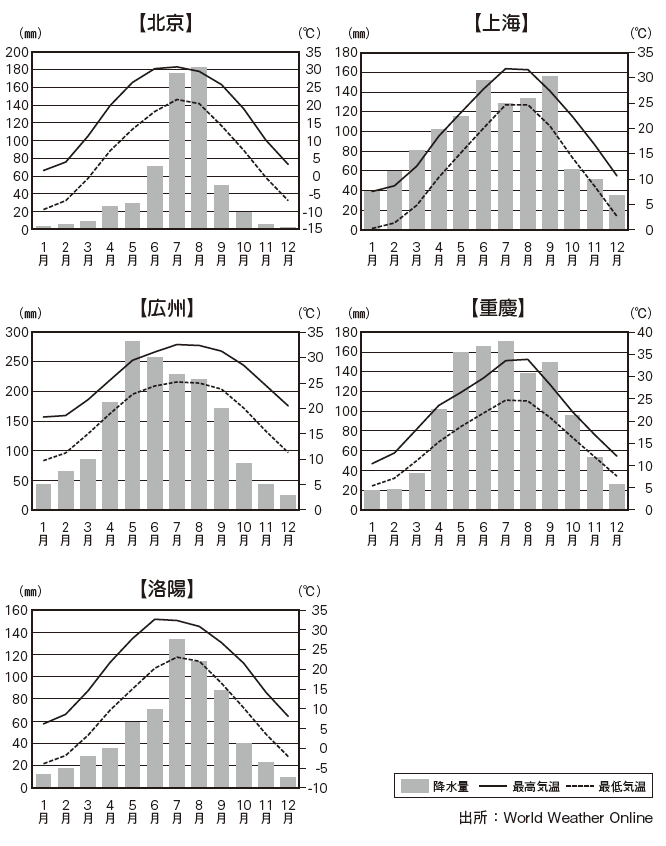
■ Time difference ⇔ - 1 hour (UTC: +8)The time difference with Japan is -1 hour, the noon in Japan is 11 am in China. The country is wide, but I use a nationwide uniform time zone. In addition, we do not adopt daylight saving time.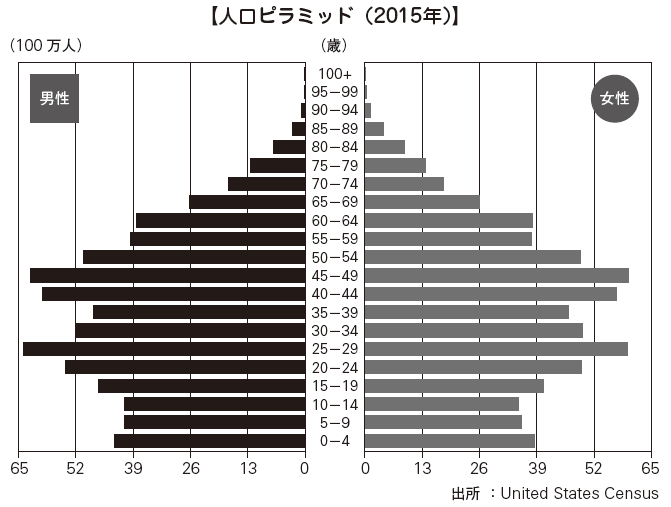
Population ⇔ approximately 1.36 billion peopleChina is the country with the world's largest population, about 1.367 million people on the demographics as of the end of 2013. This is about 10 times that of Japan, about a fifth of the world's population. As the population rapidly increased after the Second World War, in 1979 the government introduced "one child policy". As a result, the population increase has been flattened, and it has been flat since then, it is thought that in 2050 the best place in the world will be replaced by India.
■ Language ⇔ ChineseThe official language of China is the word which is said to be Chinese (ordinary story). There are many local languages in Chinese, typical examples are Guangzhou, Shanghai and Mandarin. Because these languages differ not only in pronunciation and tone (voice height), vocabulary but also grammar, there are big differences than Japanese dialects. What was regarded as a standard language after 1956 based on Mandarin became a widely used Chinese (ordinary story) now. It is said that the written language which is said to be a written word originally has kanji covering tens of thousands of characters, but since 1964, simplified letters which are simplified typefaces have been developed and widely spread. Currently it is limited to about 3,500 characters. Also, in some ethnic autonomous regions, fonts of ethnic minorities are also used together.
■ CurrencyThe currency used is the People's Bank of China (RMB: Rénmínbì) issued by the People's Bank of China and is called the Renminbi in Japan.Currency unit is original, bills are written as "」 "or" 圆 "and read as" Yuán "(In general, bills are denoted as" 圓 "and coins are indicated as" yuan " , But "original" also has meaning to denote general currency). There are six types of bank notes: 100 yuan, 50 yuan, 20 yuan, 10 yuan, 5 yuan, 1 yuan. Currently the fifth edition with Mao's portrait is mainly distributed, but some of the small bills also have an old version. Auxiliary units are "Horns" (Jiao) and "Minutes" (Fen), and the coins are 1, 5, 1, 5, 2, 1 minute.■ Chinese religion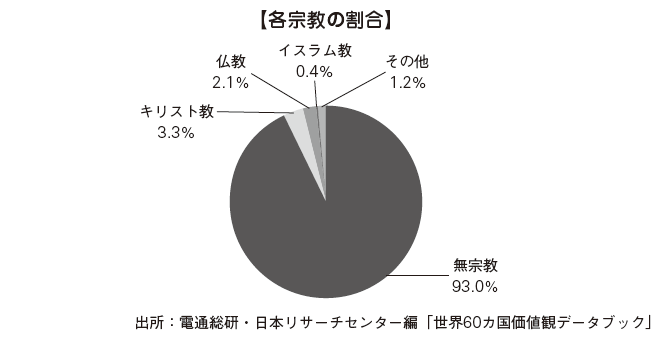
The main religions in China are Buddhism, Taoism, Confucianism, Christianity, Islam and so on. However, statistically, less than 10% of the population is summed up by all their believers, many are non religious. Unlike European and American religious perspectives, the majority of the Han people adopt multiple religions in their lives, that they tend not to regard religion as being ceremonial or traditional customs as religion, religious oppression in the Cultural Revolutionary era It is said that it is not a religious country for reasons such as the influence of. Freedom of religion is most admitted in the Constitution, in fact there are many Buddhist temples, festivals are taking place.
■ Political system[Political system]Socialist republic
Head of stateJintao Xi Jinping
[government]Prime Minister: Li Keqiang (State Council Prime Minister)Foreign Minister: Wang Yi (Director of Foreign Affairs)
The People's Republic of China is a country that adopts a one-party dictatorship system by the Chinese Communist Party. Under the idea that "all power is gathered to the people", the authority concentrates on the "National People's Congress (NPC)" composed of representatives elected by the province, municipal government, autonomous region and military .The Constitution stipulates that there is a Chinese Communist Party in its leadership positions for its NPC and other state agencies. Therefore, it can be said that the "Central Politburo standing standing committee", the communist leader group, is moving politics with de facto power.In November 2012, Hu Jintao, Wen Jiabao et al retired, re-elected to 習近 Xiaoping Central Political Bureau Standing Committee, was elected to the Chinese Communist Party general secretary and Central Military Commission Chairman General Secretary, in March 2013 at the 12th National People's Congress It became both in name and reality Xi Jinping regime is elected Jintao and state central military Commission chairman.
■ History (1949 - Hyundai)[Establishment of the People's Republic of China]Established the government of the People's Republic of China, Communist party party dictatorship state in Beijing, in 1949, as the Communist Party led by Mao wins over the civil war between the Kuomintang and the Communist Party that occurred before and after the end of the Second World War. it was done. In addition, the Kuomintang Party has moved to the Taiwan based base.
[Great leap forward]From 1958 to 60, Mao Zedong set the aim of Marxism as a principle, with the aim of economically overtaking Europe and the United States, "Major Leap Forward Campaign" was developed. It is based on aggregation of agriculture and large increase in industrial production, and almost all of the rural areas were reorganized into People's Congress. As a result, the agricultural productivity drastically declined, and natural hazards also overlapped, and several hundreds of people were said to be said to be tens of millions. The Chinese economy became a serious situation, "Great leap forward policy" which prioritized Marxist ideology failed, and Mao's resigned as President of the country. From this time, line conflicts within the Communist Party will begin to emerge.
[Cultural Revolution]After the Great Leap Force has failed, Liu Shao Deng and Deng Xiaoping will replace Mao Zedong on the basis of a revisionist route that prioritizes social stability over the revolution, and will rebuild the economy. However, since 1966, the conflict of routes began to revitalize, and it expanded to the Cultural Revolution involving violent political conflict and enormous people. Culture people and general people who are said to be "anti-revolutionary" were purged on a large scale by the government, and according to one theory there were more than millions of victims.In the 1970s, the situation of the civil war was presented as it were, and the exhaustion caused by the long-term stagnation of economic activity reached the limit and it went to calm. In 1976, the death of Mao Zedong will bring about a decade of cultural revolution to the end.
[United Nations accession and foreign strategy]In the 1970s, the position in the international community has changed drastically.The border dispute that occurred in 1969 triggered the relationship with the Soviets (then) to deteriorate, but on the other hand, we will seek ways to improve relations with Western countries. In 1972, President Nixon and Prime Minister Takashi Tanaka of Japan visited one after another, and in the same year on February 28 the same year, the "First US-China Joint Statement", and on September 29 the same year in Japan and China Three countries' diplomatic relations have been established since they signed the "Joint Statement of the Government of Japan and the People's Republic of China."In 1971 the United Nations' representative right moved to the People's Republic of China and became a permanent member of the UN. It was a time when the end of World War II and the foothold of the international community were consolidated.
[Beginning of reform and open-door routes]In 1977, the realityist leaders who were said to be rebellious Deng Xiaoping and revisionists will return and will proceed to reform and open-door routes. While allowing rural villagers to sell surplus products and admit companies' independent profit, they add elements of the market economy to the planned economy, clearly in a direction in which commodity prices are determined step by step by market principle I was steered.By improving the relations with the Western countries triggered by normalization of diplomatic relations with Japan and the United States, economic expansion has been promoted by increasing economic aid and productivity while incorporating economic assistance, the economy has grown so rapidly that it is called "factory in the world" I will.
[Tiananmen Incident]In the 1980s, the reform and open-door routes were accelerated, and more free economic activities came to be carried out. Along with that, democratization movement seeking freedom of speech also became popular. Due to the death of Hu Yaobun of the Central Committee Secretary of the Communist Party who was active in democratization, dissatisfaction of citizens, mainly students and intellectuals, increased, and in June 1989, a large-scale demonstration at Tiananmen Square Occurred.Conversely, conservative groups take the initiative and the government represses the demonstration by the People's Liberation Army of China. Although the economy is taking reform and open-door routes, it showed the people to take a hard-line stance against the move that is a threat to the Communist party's dictatorship system.
[To the High Economic Growth Era]In 1993, Jiang Zemin became the president of the state, and as a successor to Deng Xiaoping, we will inherit the reform and opening routes in general and push forward further economic development. It has become a period of high economic growth, such as GDP becoming US $ 388.8 billion in 1990 to US $ 1,071 billion in 2000. In 2001, China joined the World Trade Organization (WTO) and headed for economic liberalization in the international economy. In Hong Kong in 1997 and Macao (Macao) in 1999, it was returned to China, and we have flexibility such as one country two system.From 2005 onwards, Hu Jintao secretary and the Premier Wen Jiabao system were in place, economic growth and opening route continued. Compared to the Jiang Zemin era where the idea of making the eastern coastal area ahead and making it the driving force was the dominant attitude, emphasis was placed on growth across China.There was also a large-scale project with prestige of the country such as Beijing Olympic Games in 2008 and Shanghai World Exposition in 2010, and it has become the position to lead the world economy. And in the future, we strived to tackle issues such as disparities in rich and poor, which are regarded as distortion of economic growth.
[Xi Jinping regime and the Japan-China relations]Over the next year from 11 May 2012, the Chinese leadership has moved to the system by Xi Jinping, Li Keqiang. The remarkable high economic growth age has come to an end and it has become the beginning of a new system with many challenges such as disparity of rich and poor, political corruption, frequent occurrence of demonstrations, autonomy independence of minorities and others. Under the new regime, a policy called "reconnomics" is launched, which is led by Prime Minister Lee Kwang-sun, aiming for gradual economic growth and social stability by advancing structural reform. It is expected to cut into vested interests of energy and financial sector, political implications are strong, and attention is gaining attention in future trends.Also, after the Japanese Government 's nationalization of the Senkaku Islands in September 2012, the anti - Japanese feelings in China increased and the boycott of Japanese products and vandalism to Japanese companies expanded. Although these extreme movements have calmed down, it is said that the relationship between Japan and China is jealous after that, and it is said that the movement to revalidate China risk also started in the economic field. China Domestic Q
-
-
-
Education and education
■EducationIn China, both the literacy rate and the enrollment rate of compulsory education are very high overall, and traditionally emphasizes education both as a nation and as an individual. According to the Ministry of Internal Affairs and Communications statistics Bureau (2009), the literacy rate for the people is 94.0%, male 96.9% male and female 90.9%. In particular, it has become a major educational power by increasing educational fever accompanying high economic growth in recent years and expanding higher education.
■ Education systemThe Chinese school system is very similar to the Japanese school system. Elementary school has 6 years system, elementary junior high school is 3 years system, we have compulsory education for this 9 years. After that, it is divided into ordinary education and vocational education, it is divided into high-end junior high school which mainly goes to higher education institutions such as university, secondary vocational school which carries out vocational technical education, technical worker school, vocational middle school. For higher education, the university has a four-year system (a part of the medical faculties, engineering departments and others are five-year system), the graduate school master degree is 2-3 years, and the doctor course is 3 years system.It is regarded as a unified education system nationwide, basically entering school at the age of 6 to 7, compulsory education is 6 year system and 3 year system like Japan. Depending on region, depending on the economic situation etc, the entrance age and the number of years of enrollment are set flexibly to some extent, there are some areas which adopt the 5 year system and the 4 year system.In the past, although compulsory education had spread to about 90%, higher education was narrow gates for elite and experts that were limited. As a result of the one-child policy, the examination war for overcoming my child to higher education institutions overheated. Since the latter half of the 1990s, the recruitment frame of higher education institutions has expanded, and many highly educated people have come to be produced. As a result, in recent years college graduates have become a social problem.
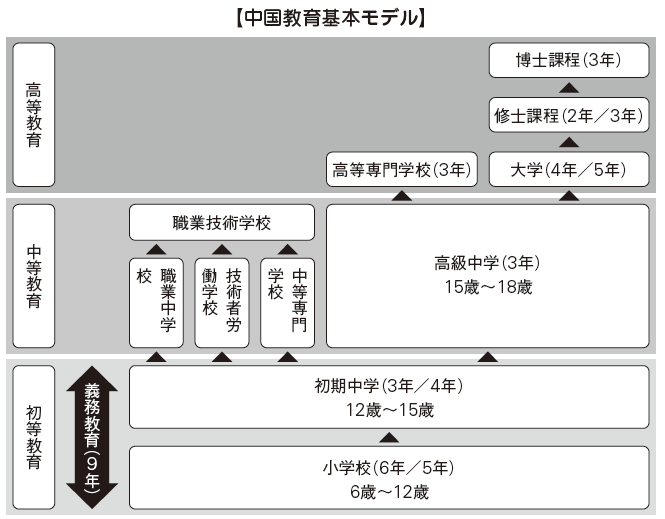
-



 Japan
Japan UnitedStates
UnitedStates China
China Hong Kong
Hong Kong Mongolia
Mongolia Russia
Russia Thailand
Thailand Vietnam
Vietnam Laos
Laos Cambodia
Cambodia Myanmar
Myanmar Indonesia
Indonesia Philippines
Philippines Singapore
Singapore Malaysia
Malaysia India
India Bangladesh
Bangladesh Pakistan
Pakistan Sri Lanka
Sri Lanka Mexico
Mexico Brazil
Brazil Peru
Peru Colombia
Colombia Chile
Chile Argentina
Argentina DubaiAbuDhabi
DubaiAbuDhabi Turkey
Turkey South Africa
South Africa Nigeria
Nigeria Egypt
Egypt Morocco
Morocco Kenya
Kenya